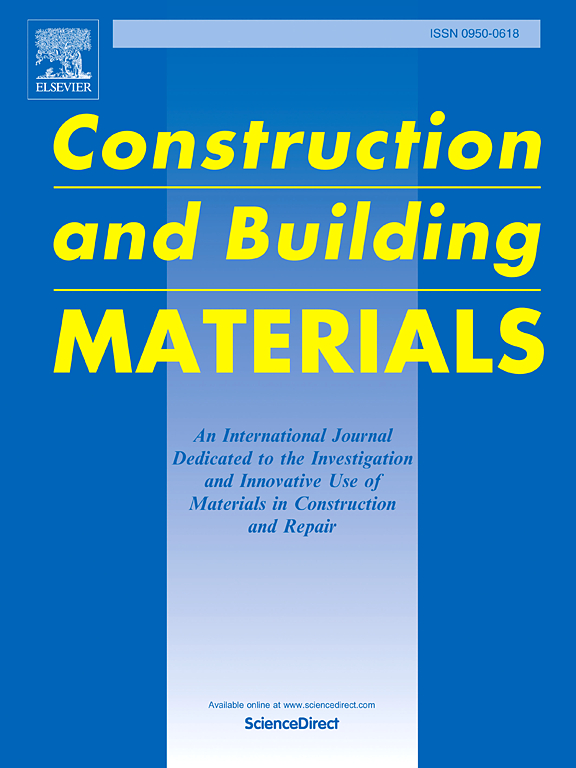Flexural fracture behavior of ultra-high performance concrete after high-temperature exposure
IF 7.4
1区 工程技术
Q1 CONSTRUCTION & BUILDING TECHNOLOGY
引用次数: 0
Abstract
Exposure to high-temperature environments can seriously affect the mechanical properties of UHPC. However, the fracture mechanism of UHPC after high-temperature exposure remains unclear. This study aims to understand the fracture performance of ultra-high performance concrete (UHPC) upon high-temperature damage. UHPC was designed with different volume ratios of steel fibers (SF) and tested under temperatures 200, 400, 600, and 800 ℃, respectively. Three-point bending tests were conducted with pre-cracked beams to investigate the bending and fracture properties of UHPC. The results show that the compressive strength and flexural strength of UHPC after high-temperature present a trend of first increasing and then decreasing with the increase in temperature, and high temperature reshapes the original development trajectory of the third stage and curves. High temperature reduces the bending toughness, double K fracture toughness, and fracture energy of UHPC, causing the original strengthening stage of UHPC to suddenly transform into a failure stage, resulting in brittle failure characteristics of UHPC—moreover, a prediction model for the fracture performance of UHPC after high temperature is proposed and validated.
高温暴露后超高性能混凝土的弯曲断裂行为
高温环境会严重影响UHPC的力学性能。然而,高温暴露后UHPC的断裂机制尚不清楚。本研究旨在了解超高性能混凝土(UHPC)在高温损伤下的断裂性能。采用不同体积比的钢纤维(SF)设计了UHPC,并分别在200、400、600和800℃的温度下进行了测试。采用预裂梁进行三点弯曲试验,研究了UHPC的弯曲和断裂性能。结果表明:高温后UHPC的抗压强度和抗弯强度随温度的升高呈现先升高后降低的趋势,高温重塑了第三阶段P−δ和P−CMOD曲线的原始发展轨迹;高温降低了UHPC的弯曲韧性、双K断裂韧性和断裂能,使UHPC原本的强化阶段突然转变为破坏阶段,形成了UHPC的脆性破坏特征,提出了高温后UHPC断裂性能的预测模型并进行了验证。
本文章由计算机程序翻译,如有差异,请以英文原文为准。
求助全文
约1分钟内获得全文
求助全文
来源期刊

Construction and Building Materials
工程技术-材料科学:综合
CiteScore
13.80
自引率
21.60%
发文量
3632
审稿时长
82 days
期刊介绍:
Construction and Building Materials offers an international platform for sharing innovative and original research and development in the realm of construction and building materials, along with their practical applications in new projects and repair practices. The journal publishes a diverse array of pioneering research and application papers, detailing laboratory investigations and, to a limited extent, numerical analyses or reports on full-scale projects. Multi-part papers are discouraged.
Additionally, Construction and Building Materials features comprehensive case studies and insightful review articles that contribute to new insights in the field. Our focus is on papers related to construction materials, excluding those on structural engineering, geotechnics, and unbound highway layers. Covered materials and technologies encompass cement, concrete reinforcement, bricks and mortars, additives, corrosion technology, ceramics, timber, steel, polymers, glass fibers, recycled materials, bamboo, rammed earth, non-conventional building materials, bituminous materials, and applications in railway materials.
 求助内容:
求助内容: 应助结果提醒方式:
应助结果提醒方式:


